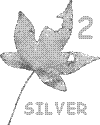 NAME: Ric Hoover
NAME: Ric HooverLOCATION: Tarpon Springs, Florida, USA
AWARD DATE: January 13, 2013
 NAME: Ric Hoover
NAME: Ric Hoover
- Great Horned Owl – Bubo virginianus
- Bald Eagle – Haliaeetus leucocephalus
- Osprey – Pandion haliaeatus
- American Crow – Corvus brachyrhynchos
- Pileated Woodpecker – Dryocopus pileatus
- Downy Woodpecker – Picoides pubescens
- Wild Turkey – Meleagris gallopavo
- Little Blue Heron – Egretta caerulea
- Great Blue Heron – Ardea Herodias
- European Starling – Stumus vulgaris
- Common Grackle – Quiscalus quiscula
- Blue Jay – Cyanocitta cristata
- Mourning Dove – Zenaida macroura
- Belted Kinfisher – Ceryle alcyon
- Black –and-white Warbler – Mniotilta varia
- Black Vulture – Coracyps atratus
- Blue-gray Gnatcatcher – Polyoptila caerulea
- Brown Pelican – Pelecanus occidentalis
- Common Carp – Cyprinos carpio
- Black Crappie – Pomoxis nigromaculatus
- Flathead Catfish - Pylodictis olivaris
- Bluegill – Lepomis macrochirus
- Largemouth Bass – Micropterus salmoides
- Corn Snake – Elaphe guttata
- Common Garter Snake – Thamnophis sirtalis parietalis
- Eastern Coral Snake – Micrurus fulvius
- Alligator Snapping Turtle – Macroclemys temminckii
- Florida Softshell Turtle – Apalone ferox
- Gopher Tortoise – Gopherus polyphemus
- Red-eared Slider Turtle – Trachemys s. elegans
- American Alligator – Alligator mississippiensis
- Green Anole – Anolis carolinensi
- American Green Tree Frog – Hyla cinerea
- Cuban Tree Frog – Osteopilus septentrionalis
- Red Fire Ant – Solenopsis invicta
- Black Carpenter Ant – Camponotus pennsylvanicus
- Annual Cicada – Tibicen linnei
- American Cockroach – Periplaneta Americana
- Silverfish – Lepisma saccharina
- Housefly – Musca domestica
- Gulf Fritallary – Agraulis vanilla
- Eastern Lubber – Romalea microptera
- No See Um – Cera topogoonidae
- Wolf Spider – Lycosidae sp. (Hogna carolinenis)
- Poison Ivy – toxicodendron radicans
- Virginia Creeper – Parthenocissus quinquefolia
- Florid Grape Vine – Vitis rotundifolia
- Red Maple – Acer rubrum
- Slash Pine – Pinus elltotti
- Southern Magnolia – Magnolia grandiflora
- Sand Live Oak – Quercus geminate
- American Beauty Berry – Callicarpa Americana
NON-WOODY PLANTS
- Kudzu – Pueraria lobata
- Pickerel Weed – Pontederia cordata
- Poinsettia – Euphorbia pulcherrima
- Star Jasmine – Jasminum nitidum
- Petunia – Petunia x hybrid
- Cinnamon Fern – Osmunda cinnamomea
- Croton – Codlaeum variegarum
- Southern Cattail – Typha domingensis
REMARKS ON THE THREE SPECIES OF MOST INTEREST TO RIC:
1 – An interesting species is the White-tailed
deer. It is a species that raises a conflict in mankind. Here I look out into my
backyard and watch “Bambi” with her mother casually feeding along the
preservation land and walking off peacefully into the wooded area. I know they are most
likely going to survive since there are no predators in this area to harm them. It brings
the heartfelt warmness to one in the early morning before the day begins. Then there is
the reality that the White-tailed Deer is responsible for millions of dollars worth of
property damage and hundreds of human deaths each year because they are overpopulated in
this country. There is conflict between groups, agencies, and individuals as how to
control them which postpones a solution and allow the population to increase even more.
The questions are then who is to blame and what is an appropriate solution.
2 -The Bald Eagle is another species I like. It personally just appears
majestic in nature. Call it patriotism – so be it. I just do not believe I would
feel that way if it was the Wild Turkey as our national symbol. I am fortunate to be able
to observe several nests in my area during nesting season and see immature ones also. I am
disheartened to know they are scavengers; but if you keep your glass half full and not
half empty you see them as beautiful flying creatures.
3 – The Green Anole interests me recently because I am more aware
of their decline in this area. Ten years ago when we moved in we painted our master
bedroom a bright green for some reason. I use to notice the Green Anoles in the outer
window recess and joked to my wife they felt at home and were trying to blend in and hide
from predators. Their color is striking. Now with the increase of the Brown Anole I very
seldom see the Greens around. Or perhaps maybe it is because we changed the color of our
bedroom walls.